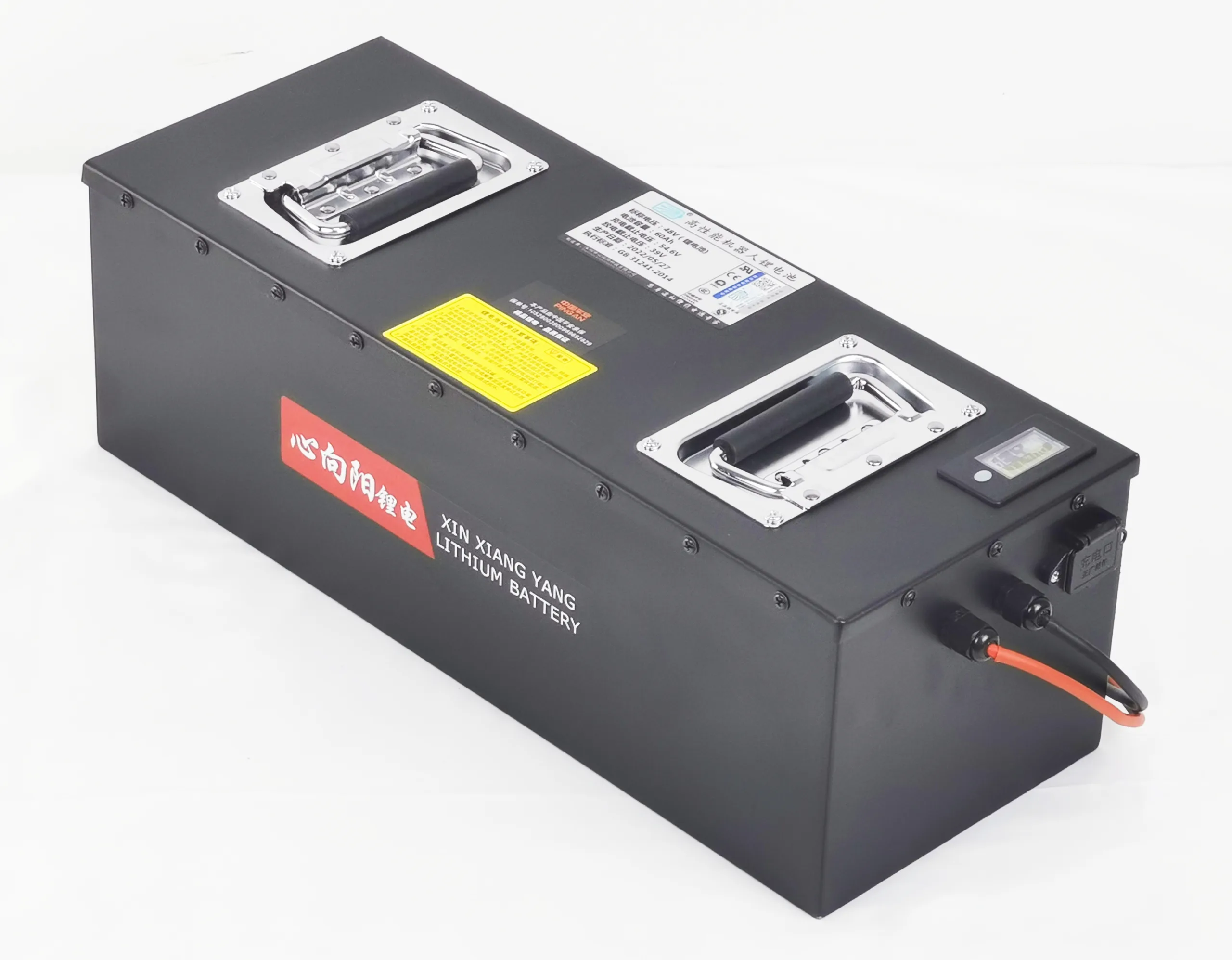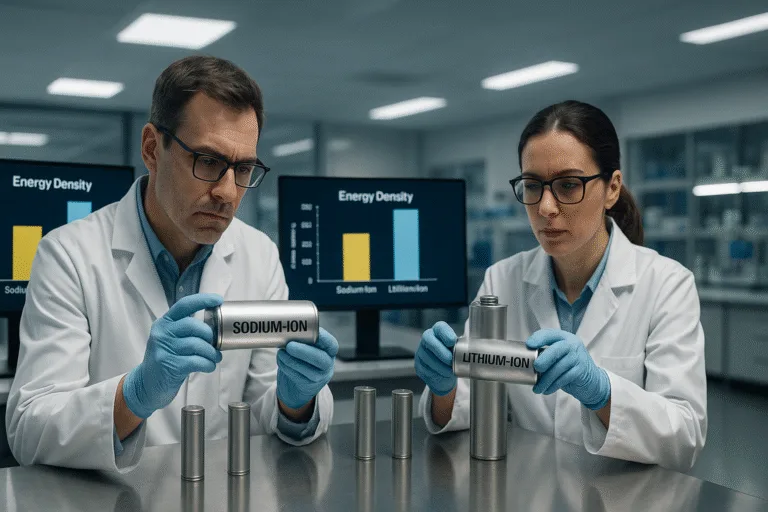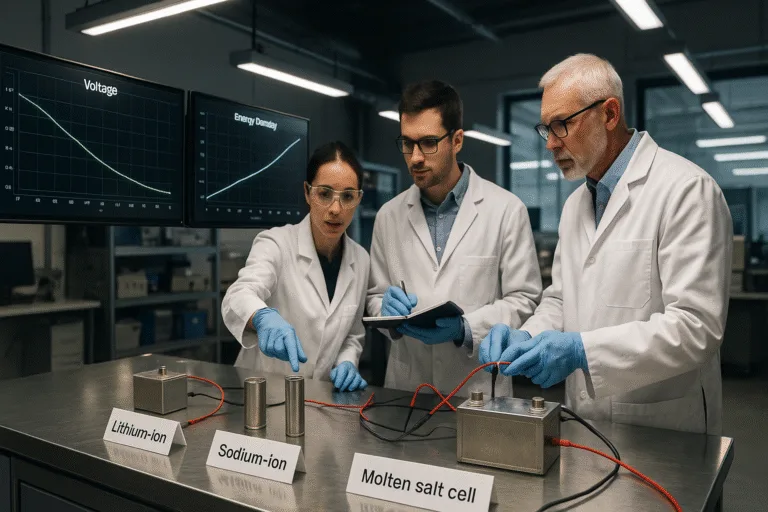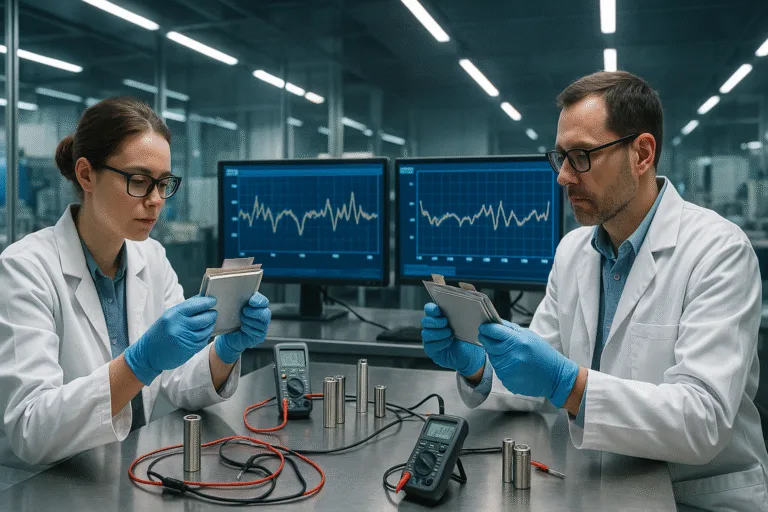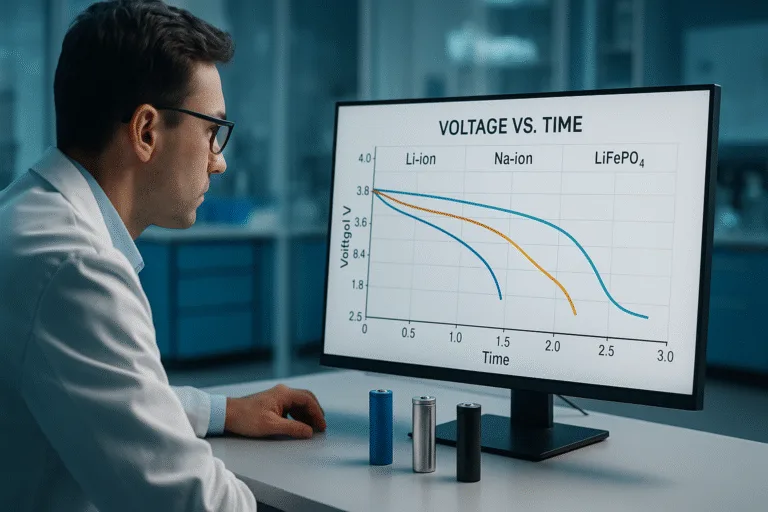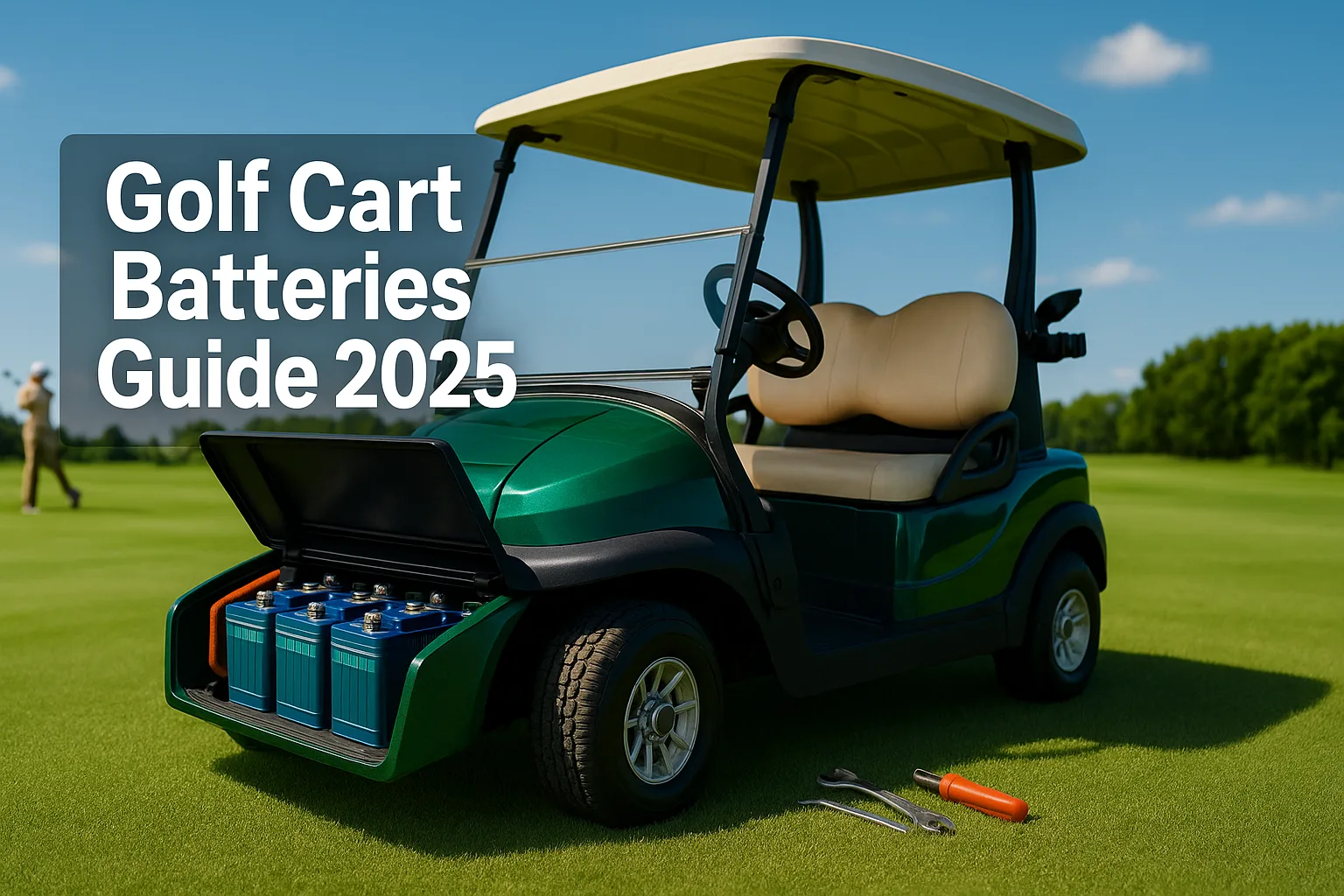
Golf cart owners face battery failures. This drains fun from rides. I share solutions from my experience.
Golf cart batteries power your vehicle reliably. In 2025, lithium types lead with 10+ year lifespans and 50% less weight than lead-acid, cutting costs long-term despite $2,000+ upfront price. They offer 2,000-5,000 cycles versus 500-800 for lead-acid or AGM, boosting efficiency and range.
I recall my first golf cart. It died mid-game. That sparked my battery quest.
What are the different types of golf cart batteries?
Golf carts need strong batteries. I see many types in my work.
The main types are flooded lead-acid1, AGM2, gel3, and lithium-ion4. Each fits different uses and budgets. In 2025, lithium dominates trends with falling prices and higher adoption, while lead-acid remains budget-friendly at $600-1,500 per set.
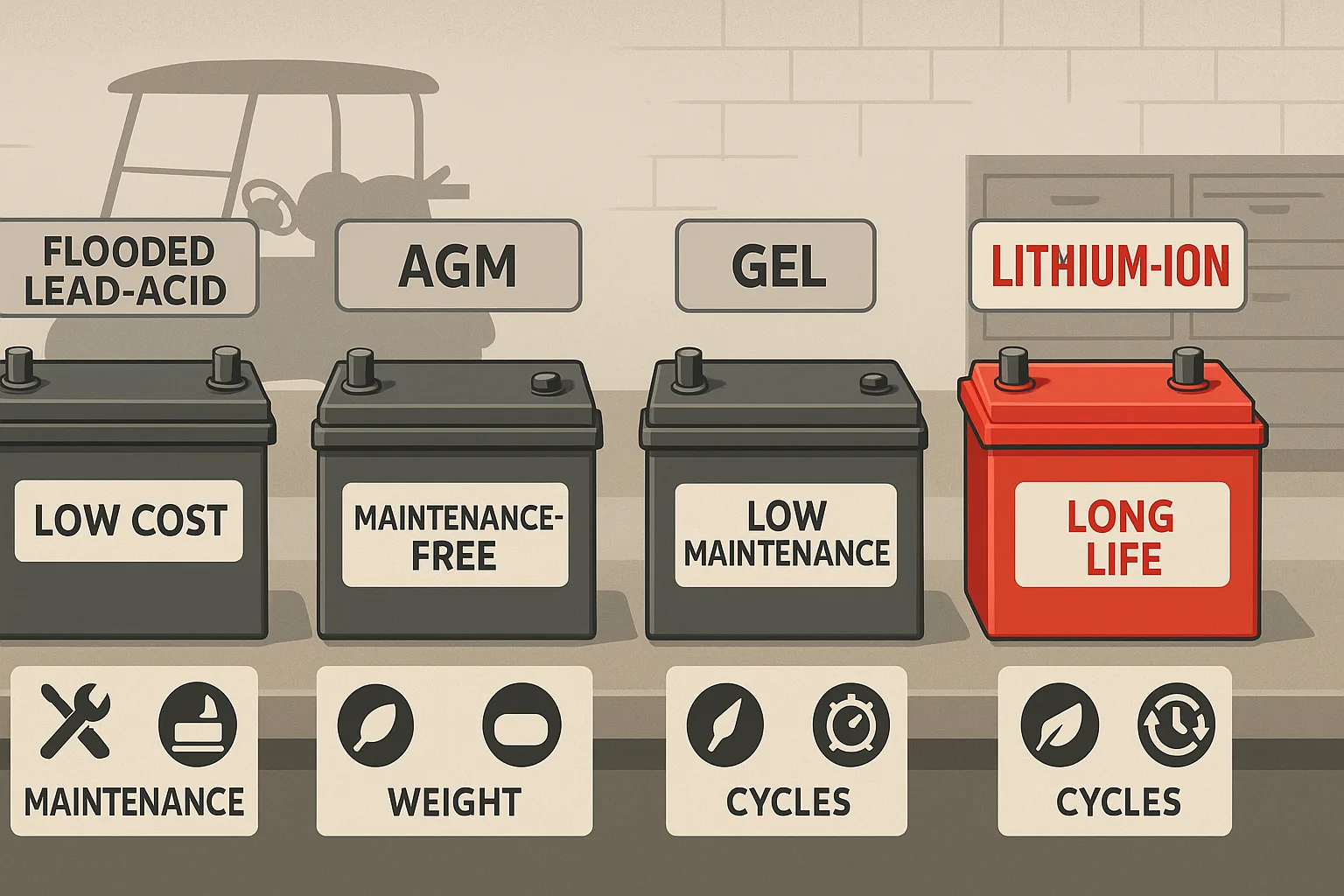
I look at flooded lead-acid first. These are cheap. They need water checks. Users add distilled water often. This keeps them running. But spills happen. I had one leak once. It messed up my cart floor.
AGM Batteries
AGM stands for absorbed glass mat. They seal acid in mats. No leaks occur. They charge fast. But they cost more than flooded ones. In hot weather, they last longer. Cold hurts them less.
Gel Batteries
Gel types mix acid with gel. They resist vibration. Good for rough paths. They discharge slow. But overcharge damages them. I tested one in a bumpy course. It held up well.
Lithium-Ion Batteries
Lithium batteries weigh less. They last five times longer. No maintenance needed. They charge in hours. But upfront cost is high. For daily use, they save money over time.
2025 Trends in Battery Types
Lithium adoption rises to 70% by 2030. Prices drop with new tech like sodium-ion. Lead-acid holds for budgets.
| Type | Pros | Cons | 2025 Cost (Full Set) | Cycle Life | 2025 Trend |
|---|---|---|---|---|---|
| Flooded Lead-Acid | Low cost, high capacity | Needs maintenance, risk of spills | $600-1,200 | 500-800 | Declining use |
| AGM | No maintenance, fast charge | Higher cost, sensitive to overcharge | $1,200-2,000 | 500-1,000 | Stable for mid-range |
| Gel | Vibration resistant, deep discharge | Slower charge, expensive | $1,000-1,800 | 600-900 | Niche for rough terrain |
| Lithium-Ion | Long life, lightweight | High initial cost, needs BMS | $2,000-5,000 | 2,000-5,000 | Rapid growth |
Think about your use. Daily rides suit lithium. Weekend fun fits lead-acid. Cost matters. Long-term savings come from durable options. Safety varies too. Lithium has built-in protection. Lead-acid needs careful handling.
What does GC2 mean on a battery?
Batteries have codes. GC2 puzzles many people.
GC2 is a group size for golf cart batteries. It means 6-volt deep cycle. Fits most carts with standard dimensions of 10.25×7.06×11.25 inches. In 2025, lithium GC2 options grow popular for easy upgrades, weighing half as much.
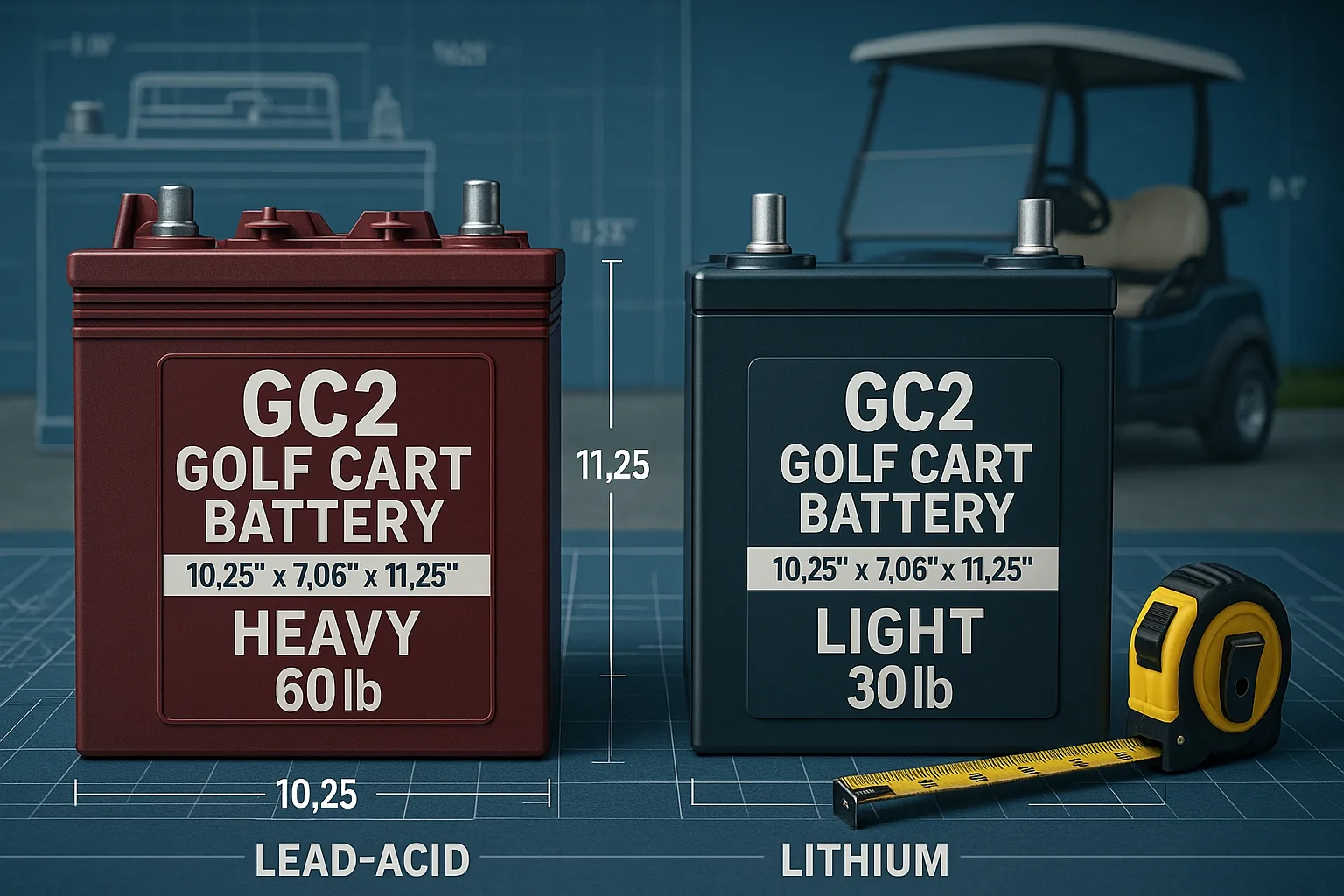
GC2 comes from Battery Council International. They set sizes. Weight is around 60 pounds for lead-acid.
Why GC2 Matters
Carts design for GC2. It ensures fit. Wrong size causes issues. I swapped a wrong battery once. It rattled and failed early.
GC2 in Lithium
Lithium makers offer GC2 sizes. They drop in easy. Same fit, better power. Our company makes custom GC25 lithium packs.
Real-World Testing
I tested GC2 lithium in daily use. It boosted range by 30%.
Look at applications. Golf carts use them most. Also in RVs and solar setups. Deep cycle means long discharge. Not for starting engines.
| Feature | GC2 Lead-Acid | GC2 Lithium | 2025 Trend |
|---|---|---|---|
| Voltage | 6V | 12V or more in packs | Lithium shift |
| Cycle Life | 500-800 | 2,000-5,000 | Longer life focus |
| Weight | 60 lbs | 30 lbs | Weight reduction |
| Cost | $150-250 each | $400-600 each | Prices falling |
Consider upgrades. GC2 lithium reduces weight. This boosts speed. But check cart voltage6. Most need 48V total. Use eight 6V or four 12V.
Which is better AGM or lithium batteries for golf carts?
People debate AGM and lithium. I compare them often.
Lithium beats AGM in life, weight, and charge speed with 2,000+ cycles vs. 500-1,000. AGM costs less upfront at $1,200-2,000 per set vs. lithium’s $2,000-5,000. In 2025, lithium’s efficiency wins for long-term savings and performance.
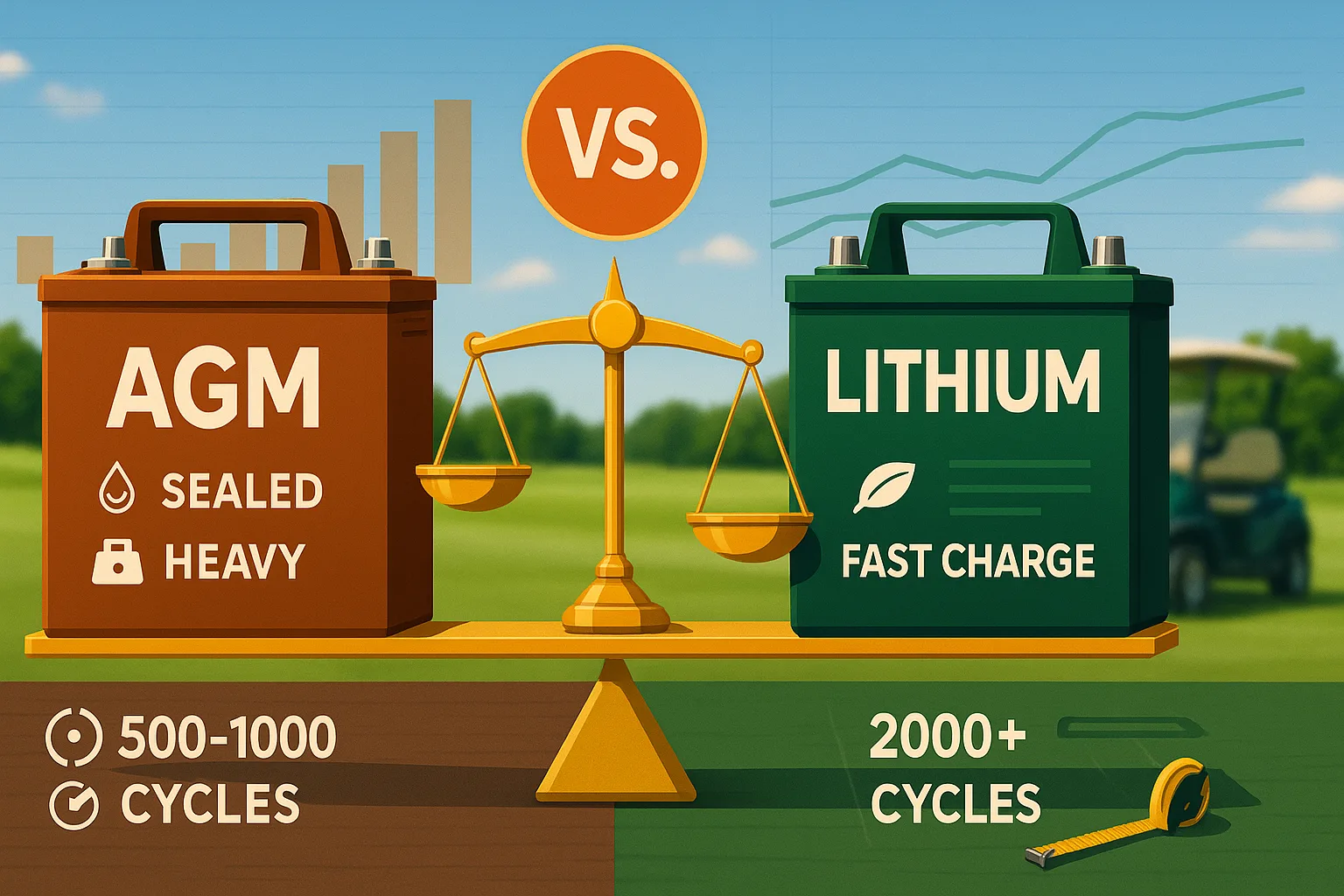
AGM seals electrolyte. No spills. They last 3-5 years. Lithium goes 10+ years. I switched to lithium. My cart runs farther now.
Performance Comparison
Lithium discharges deeper. Use 80% capacity. AGM limits to 50%. This means more runtime.
Cost Breakdown
AGM sets cost $1,200-2,000. Lithium $2,000-5,000. But lithium lasts longer. Saves on replacements.
Real-World Testing
In heat, lithium holds better. I used both in summer rounds.
| Aspect | AGM | Lithium | 2025 Trend |
|---|---|---|---|
| Weight | Heavy | Light | Lighter preferred |
| Charge Time | 8 hours | 2 hours | Faster charging |
| Maintenance | None | None | Maintenance-free |
| Lifespan | 3-5 years | 10+ years | Extended life |
| Cycle Life | 500-1,000 | 2,000-5,000 | High cycles rising |
Think about environment. Lithium handles heat better. AGM suits mild use. For pros, lithium wins. Casual users pick AGM. Safety: Both are safe. Lithium has protection circuits.
What are the best batteries to use in a golf cart?
Choices overwhelm owners. I guide clients daily.
Lithium-ion batteries top the list for 2025. Brands like RoyPow, RELiON, Allied, Trojan, and our Junda offer custom LiFePO4 packs with 2,000+ cycles and $2,000-5,000 costs. They provide reliability, efficiency, and 10+ year life.
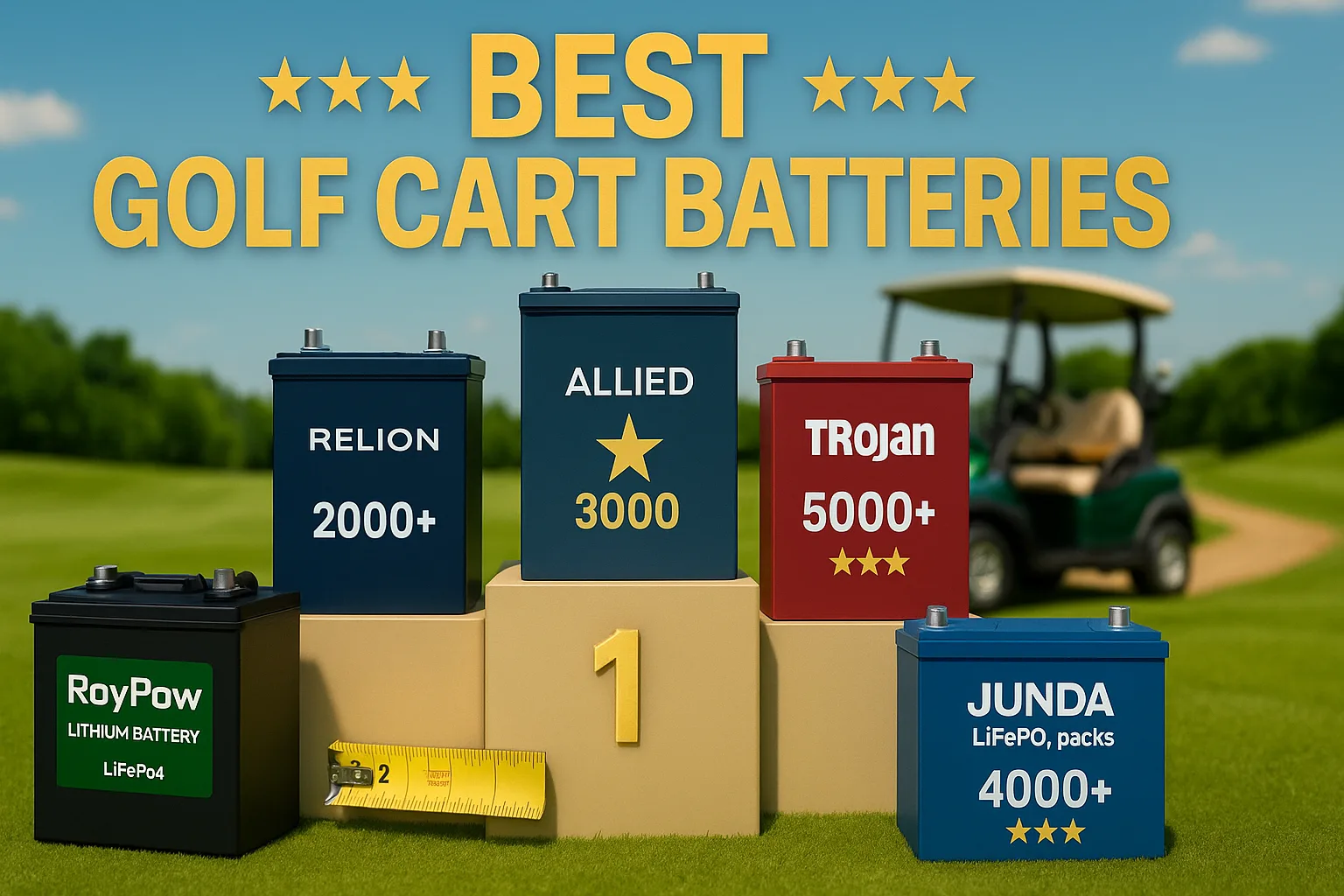
Best depends on needs. For long rides, lithium excels. I used lead-acid before. Switched and never looked back.
Top Brands
RoyPow balances range and value. Trojan does solid lead-acid. RELiON excels in lithium. Allied fits many models. Our Junda packs customize for carts.
Factors to Consider
Voltage matters. Most carts need 36V or 48V. Capacity affects range. Look for 100Ah or more.
Cost Breakdown
Lithium starts at $2,000. Lead-acid at $600. Factor in cycles for savings.
| Battery | Type | Why Best | 2025 Cost | Cycle Life | 2025 Trend |
|---|---|---|---|---|---|
| Junda LiFePO4 | Lithium | Custom design, global support | $2,500+ | 3,000+ | Custom rising |
| RoyPow 48V | Lithium | Balance of range/value | $2,000-3,000 | 2,000-4,000 | Top seller |
| RELiON RB100 | Lithium | High cycles, lightweight | $2,500-4,000 | 3,000-5,000 | Efficiency focus |
| Trojan T-105 | Lead-Acid | Affordable, proven | $800-1,200 | 500-800 | Budget hold |
| Allied | Lithium | Model-specific | $2,000-5,000 | 2,000+ | Versatile |
Evaluate your setup. Custom needs? We design packs. Certifications ensure safety. UN38.3 and CE matter. For industrial use, reliability counts.
Conclusion
Golf cart batteries vary by type and need. Lithium offers top performance in 2025. Contact Junda at [email protected] for custom solutions.
-
Explore the benefits of flooded lead-acid batteries, including their cost-effectiveness and high capacity. ↩
-
Learn about AGM batteries, their maintenance-free nature, and how they perform in various conditions. ↩
-
Discover the unique features of gel batteries, including their vibration resistance and deep discharge capabilities. ↩
-
Find out why lithium-ion batteries are becoming the top choice for golf carts due to their longevity and efficiency. ↩
-
Understand the significance of GC2 in battery sizes and its implications for golf cart compatibility. ↩
-
Discover the importance of voltage in battery selection and its effect on golf cart performance. ↩

